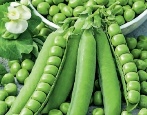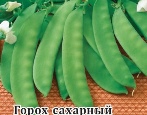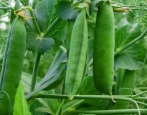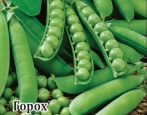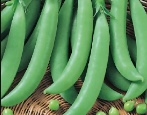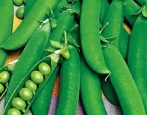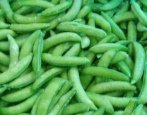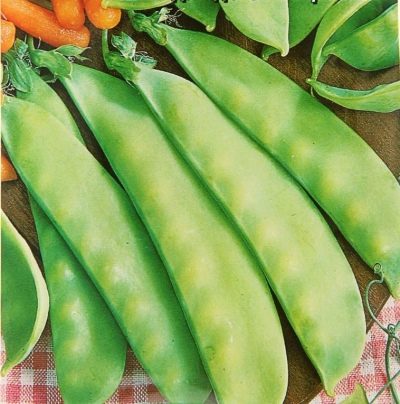
- Authors: Nastenko N.V., Kachainik V.G., Gulkin M.N.
- Name synonyms: Baby sweet
- Year of approval: 2015
- Ripening terms: mid-early
- View: sugar
- Stem length, cm: 50-70
- Sheet: normal type, medium-sized leaves - large, green with a grayish tinge and waxy bloom
- Stipules: medium-sized - large with a waxy coating and very slight mottling
- Flowers: white, medium - large
- Parchment layer: Dont Have
Children's sugar peas are a variety that attracts gardeners with large pods and high yields. The plant quickly takes root even in harsh conditions, it is resistant to pests and diseases. It is worth considering in more detail the characteristics and characteristics of the variety.
Breeding history
The variety was bred by domestic breeders quite recently. Children's sugar peas were included in the State Register of the Russian Federation in 2015, but the variety quickly gained popularity in the regions.
Description of the variety
Baby sugar peas grow up to 70 cm long, suitable for growing in the open field. Variety characteristics:
leaf plates are of medium size, green in color, with a waxy coating on the surface;
flowers are white, mostly large;
the height of the first pod above the ground is 30-35 cm.
Pea stalks twist along the ground, therefore, they require timely garters.
Characterization of the appearance of plants, beans and seeds
The variety forms rather large beans, for which it is appreciated among gardeners. Pod characteristics:
shape - slightly curved;
the tip is sharp;
bob length - 11 cm;
width - 1.3 cm;
skin color - light green.
On average, one bean contains up to 9 seeds and does not have a parchment layer. 1000 seeds weigh from 180 to 210 g.
Purpose and taste
The absence of a parchment shell makes it possible to use both beans and baby peas pod for food. The variety has a pleasant and sweet taste, which is why children like it. It is also suitable for preservation for subsequent use in salads, soups or main dishes.
Ripening terms
The variety belongs to the group of plants with a mid-early ripening period. Pods are formed 55-65 days after planting the crop in the ground.
Yield
The average yield reaches 1.8 kg per m2. With proper care, it can be increased up to 2 kg.
Growing and care
Peas are grown by seeds, as they quickly take root in the open field and start growing almost immediately. First of all, it is worth preparing the seed.
Selection. First of all, it is necessary to weed out samples that are unsuitable for planting. A glass of water will help to do this, in which it is necessary to soak the seeds until they swell. Empty samples will immediately float to the surface and can be removed.
Disinfection. It is carried out by soaking the seeds in a solution of potassium permanganate. The duration of the procedure should not exceed 20-30 minutes.
Treatment. Gardeners recommend spraying seeds with growth stimulants before sowing.
Simultaneously with the preparation of seeds, fertilization and loosening of the soil are carried out. This prevents the spread of diseases and pests, reduces soil acidity, and increases yields.
Seed planting is carried out according to the following scheme.
Up to 30 cm recede between the rows.
15 cm is kept between the seeds in a row.
The maximum planting depth is 4-6 cm.
When the disembarkation is complete, it remains to take care of the peas. Basic moments.
Watering.Children's sugar variety is quite picky about regular watering. Therefore, it is recommended to add water to the soil 1-3 times a week, depending on weather and climatic conditions. It is better to water it with warm water.
Top dressing. The first fertilizers should be applied to the soil before planting the peas. Then the soil is fed during the period of active growth and flowering of the crop. In general, preference is given to organic or complex mixtures.
Loosening and weeding. Mandatory procedures that will help prevent the spread of diseases and pests. Loosening will further accelerate the flow of nutrients to the roots of the plant, which will have a positive effect on the quantity and quality of the crop.
Gardeners also recommend tying the stems to wooden or plastic supports. This will help reduce the risk of rotting pods that form near the ground. Harvesting takes place 1.5-2 months after planting the seeds.

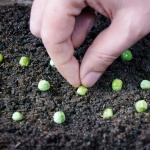
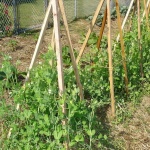

Soil requirements
It is recommended to grow Children's peas in fertile soils. Recommendations for choosing a landing site:
the site should be well lit and calm;
acidity index should be neutral;
before planting, it is worth fertilizing and loosening the soil.
If necessary, the acidity can be brought to neutral with alkaline mixtures.
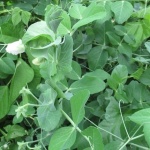
Disease and pest resistance
The variety is quite resistant to most popular pests and diseases. However, with improper care, peas are exposed to fusarium and require immediate treatment and removal of damaged elements.
Preventive treatment with special formulations will help prevent the spread of the disease, as well as the attacks of pests. You can purchase a product for spraying seeds or growing stems at a gardening store.
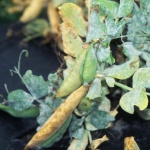
Review overview
Children's sugar peas were appreciated by many gardeners. The advantages of the variety include high yield, excellent taste and quick survival even in harsh conditions.
